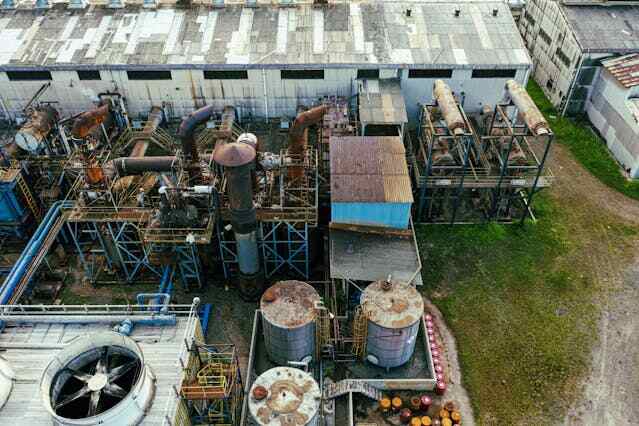
- admin
- April 30, 2024
Mastering Crude Oil Storage Tanks for success:Unlocking the Secrets
Mastering Crude oil storage tanks construction requires tank builders to utilize materials such as steel, concrete, or fiberglass . They select materials based on factors like tank size, placement, and surroundings. These tanks frequently incorporate special features such as rust protection, damage-resistant coatings, and additional safeguards to secure contents and prevent leaks.
Types of Crude Oil Storage Tanks:
- Aboveground Storage Tanks (ASTs) Underground Storage Tanks (USTs) are buried beneath the ground and hold crude oil and petroleum products. They typically consist of steel or fiberglass, but include protections to prevent leaks and soil and groundwater pollution.
- Underground Storage Tanks (USTs) bury beneath the ground and hold crude oil and petroleum products. They usually consist of steel or fiberglass and include protections to prevent leaks and soil and groundwater pollution.
- Floating Roof Tanks feature a roof that floats and adjusts up or down with changes in the amount of crude oil inside. They are designed to prevent vapors and oil from escaping, making them ideal for storing types of crude oil that easily evaporate.
Construction of Crude Oil Storage Tanks:
Tank builders use materials like steel, concrete, or fiberglass to construct crude oil storage tanks. They choose materials based on factors like tank size, placement, and surroundings. These tanks often have special features like rust protection, damage-resistant coatings, and additional safeguards to secure contents and prevent leaks.
Maintenance of Crude Oil Storage Tanks:
Keeping crude oil storage tanks in good condition is crucial for safety and efficiency. This means checking them regularly for rust, leaks, and damage, and making sure parts like roofs and seals are clean and working well. It’s also important to have systems in place to quickly find any leaks or spills.
Regulatory Requirements:
Regulatory rules for crude oil storage tanks are super strict to keep everyone safe and protect the environment. Big organizations like the EPA and API make rules about how tanks should be built, checked, and kept up.
Conclusion:
Regulatory agencies like the Environmental Protection Agency (EPA) and the American Petroleum Institute (API) set strict standards for tank design, construction, maintenance, and inspection to ensure safety, environmental protection, and industry standards compliance in mastering Crude Oil Storage Tanks.
- Crude Oil Storage Tanks for success
- Crude Oil Storage Tanks for success in 2024
Category
- Above Ground Fuel Tanks
- Above Ground Gas Storage Tank
- Above Ground Storage Tanks
- Above Ground Water Storage Tanks
- Agricultural Tanks
- Chemical storage Tanks
- Diesel Fuel Storage Tanks
- Diesel Storage Tanks
- Exernal FloatingRoof Tanks
- Farm Water Tank
- Fiberglass Oil Tanks
- Fiberglass Septic Tanks
- Fiberglass Underground Fuel Storage Tanks
- Field Erected Tanks
- Floating Roof Tank
- Fuel tank
- Industrial Chemical Storage Tanks
- Industrial Gas Tanks
- Industrial Plastic Tanks
- Industrial Storage Tanks
- Industrial Tank heating pads
- industrial tanks
- Natural gas
- Natural gas vs Propane
- oil storage tank
- Oil Storage Tanks
- Peracitic Acid
- Petroleum Tanks
- Residential gasoline storage tanks
- Residential Water Storage Tanks
- Sodium Hydroxide Storage Requirements
- Sodium Hypochlorite Storage Tanks
- Steel Storage Tanks
- storage tank failure prevention
- Storage Tanks
- Sulfuric Acid Tanks
- Uncategorized
- UnderGround Storage Tanks
- Waste water tank
- Water Storage Tanks

 Tank Size Calculator
Tank Size Calculator






